#nakota territory
Text

south of tsuut’ina in millarville, treaty 7 territory
9/9/23
treaty 7 is home to the siksika (blackfoot), kainai (blood), piikani (peigan), îyârhe nakota (stoney), tsuut’ina (sarcee), and the otipemisiwak (métis)
#literally blown away by the beauty of the foothills#we drove through tsuut’ina rez to get here#saw a tsuut’ina stop sign#it was so beautiful#ph#photography#landscape#landscape photography#green#summer#foothills#prairies#my work#my photos#original photography#alberta#canada#treaty 7#native#otipemisiwak#métis#michif
78 notes
·
View notes
Text
After about a decade of building up my crystal collection, I can no longer close my eyes to what I've been supporting. Far from the good vibes that crystals are purported to have, I need to be honest that their trade funds the same human rights abuses and environmental destruction that I've spent most of my life decrying. I need to address this cognitive dissonance within myself, and can no longer endorse buying mass-market crystals anymore. I call myself an earth-worshipper, or nature-worshipper, yet I'm contributing to the destruction of the Earth and her people. This no longer sits right with me. Yes, there are likely minerals in my phone that were mined using less-than-ethical practices, however a cell phone in this day and age is kind of a necessity. Decorative crystals and fossils, though, are more difficult to justify in this way.
I'm still going to keep the ones I have for now, because, welp, the damage has already been done, and getting rid of them now won't undo what I've been endorsing with my dollar. I still have a box of gems that I bought to make wire-wrapped jewelery with, and I'm still not sure what I'm going to do with those, so they're tucked away until I can decide.
If there's interest, I may make some pieces with them and put them up for sale as a Crystal Clearout sale, since I did spend a lot of money on those supplies. Or I might wear or gift them. We will see.
Back to my spiritual practice. What am I going to use instead?
River rocks!
Or lake rocks. Park rocks. Parking lot rocks. Farm rocks. Forest Rocks. Anything except store-bought is fine. Look at these cool rocks I've found in my city so far! These are geologically tied to the place I live, they carry the history on the land I'm on, which is not mine to live on. It is Treaty 6 territory—the traditional and ancestral territory of the Cree, Dene, Blackfoot, Saulteaux and Nakota Sioux. This territory is home to the Métis Settlements and the Métis Nation of Alberta, Regions 2, 3 and 4 within the historical Northwest Métis Homeland.
These stones carry the memory of the people who were here before me, and that of a not-so-distant history I need to address time and time again, examine my own biases, and do what I can to address inequalities right here, right now. They are a connection to this land, and those who live on it.

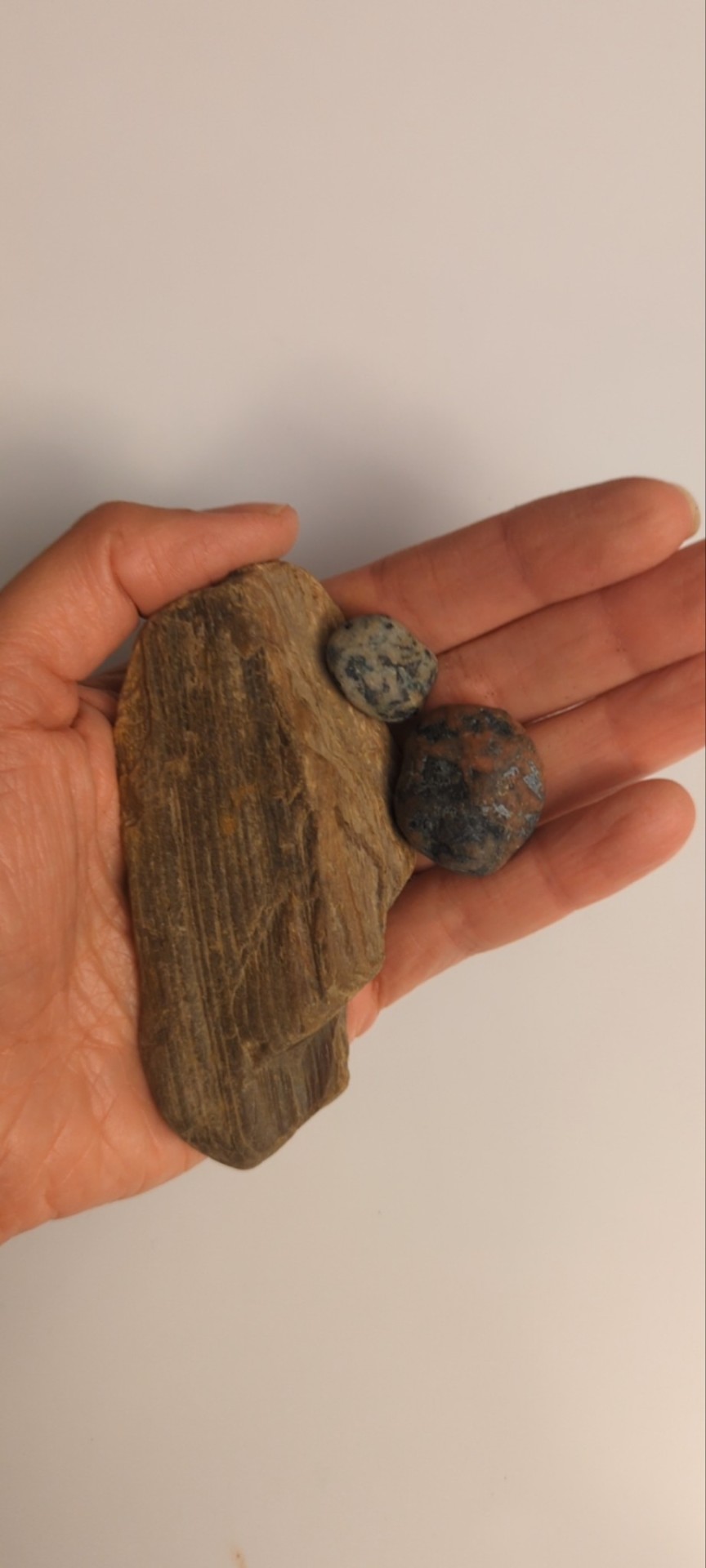
These stones can also hold my own memories, for instance this petrified wood reminds me of a day a friend and I went rock-hunting by the river, and on a trip to Ontario with this same friend, we found some jade (I think). Which brings me to another point. I am not a geologist. I plan to learn about minerals local to me, but I'll never have the assurance of some shopkeeper (whatever that's worth) that what I'm holding is 100% a piece of pure amethyst, and here is a list of its properties. Instead, I'll be able to find my own meaning in the stones, feathers and flowers I find while walking in the world, and use them in my practices the way I feel intuitively guided to.
In spiritual practices, what we are working with is energy and intention. The rest are simply tools, symbols for our brain to understand what we are channeling towards or away from. The most important quality you can develop as a witch, a pagan, a yogi, a spiritualist, whatever you wish to call yourself, is self-trust. Trust that you are enough. Trust that this stone made its way to you so that you would find it exactly when you did. Trust that the herbs you lovingly grew, watered, bundled and dried are sufficient for clearing any stale energies. Learn from those who came before you, but at a certain point, you have to free yourself from reliance on corporations, merchants, readers, authors, course creators, and anyone else looking to make a buck off your lack of experience and confidence.
When you have a true need, harken not to others' greed. (the Wiccan Rede)
Consumerism has its hooks in us to such a point where we feel like we have to buy our way out of all of our real or perceived inadequacies.
Feeling down? Buy this sun lamp!
Tummy hurts? It's this scary new syndrome I just made up! Peer review, what's that? Nevermind. Buy this supplement!
Want to feel really cool and attractive? Buy this new outfit!
Want to make friends? Learn a new hobby! Oh, but this hobby requires you to buy all this gear before anyone thinks you're serious about it! And make sure you buy a t-shirt that says you're into this hobby while you're at it, so you can talk about it to everyone!
McSpirituality works the same way. Feel like you don't belong? It's definitely a past life thing, buy a reading with me to find out! Looking for love? Make sure you buy a rose quartz to send a lover your way within 24 hours. Hmm, it didn't work? It must not be big enough. Make sure you buy this one instead! Trying to get into meditation? You'll need to buy a zafu, some mala beads, and a buddha head with some very questionable history Are you broke after all these purchases? You can just buy this abundance generating spell kit, and this $10K course (I have seen this price point, it's not hyperbole) on dissolving your subconscious blocks to abundance!
It's not your fault, it's the system we all live in. I was, and still am, immersed in it too. If you're in a tough place, it can be so easy to be swept up by the promise of a quick fix, because spiritual work is hard. You'll have to confront yourself in some tough ways, work through traumatic experiences and spend years building discipline and focus.
It's a lot easier to just walk into a crystal shop and pick the one you like, isn't it? But I want to remind myself that life doesn't work that way.
Do you just walk into a store and pick out the partner, the job, the house, the experiences, the circumstances that look prettiest?
Okay, maybe some of you do if you're very lucky or have certain privileges, but these choices aren't always the ones that guarantee long-term compatibility or happiness.
In real life, it's a lot more like walking down a riverbank with a friend, catching up on life, and showing each other the cool thing you found, maybe deliberating on what it might be. Your rock might look different than hers, but you found it and it feels good to you. Maybe the shape feels satisfying and built just for your hand. You feel like it was waiting for you all this time.
Or maybe it's like walking home after a difficult day, and seeing the little sparkle of something glimmering in the sunlight. Maybe this represents hope and silver linings. Maybe a bird eyes you as you examine your rock, offering you company and understanding in a way that words fail to.
That feeling certainly isn't for sale in stores, or online. If I find it at a garage sale, I'll let you know.
#witchblr#wicca#green witch#witch#wiccan#crystals#altar#ethical crystals#mining#human rights#anti consumerism#witches against consumerism#witches vs patriarchy
39 notes
·
View notes
Text
South Dakota

South Dakota is a state located in the Midwestern region of the United States. Known as the "Mount Rushmore State," South Dakota is home to some of the most iconic landmarks in America. This article provides an extensive overview of South Dakota covering its history, geography, climate, economy, culture, tourism, and other related information.
The history of South Dakota dates back to prehistoric times when it was inhabited by numerous Native American tribes. French and Spanish explorers later arrived in the region, but European settlement did not occur until the 19th century with the discovery of gold. The Homestead Act also attracted many settlers to the region, leading to further development and growth.
South Dakota's geography is diverse, encompassing the Black Hills, Badlands, high plains, rolling hills, rivers, and lakes. The state's unique ecology comprises of prairies, forests, and wildlife. The climate varies depending on the region, but South Dakota generally experiences a continental climate with cold, dry winters and hot, humid summers.
The state's economy is dominated by agriculture, tourism, and manufacturing. The major industries include beef and dairy farming, food processing, machinery, and healthcare. South Dakota is also home to several research institutions, making it a hub for scientific and technological advancements.
South Dakota has a vibrant culture that is reflected in its art, music, literature, and festivals. The state is also renowned for its outdoors and adventure activities, such as camping, hiking, skiing, and rodeo. The major cities in South Dakota include Sioux Falls, Rapid City, and Aberdeen.
Whether you're interested in history, nature, or adventure, South Dakota has something to offer for everyone. The top places to visit in South Dakota include Mount Rushmore, Badlands National Park, and Crazy Horse Memorial. The state is also known for its local specialties, craft beer, and wines. Visitors can choose from a wide array of high-quality accommodations, ranging from hotels and guesthouses to camping sites.
South Dakota is truly a great destination that offers endless possibilities for exploration and adventure.

Etymology
South Dakota was admitted to the Union on November 2, 1889, as the 40th state of the United States. Its name comes from the Lakota and Dakota Sioux Native American tribes, which means "friend" or "ally." The state is also known as the "Mount Rushmore State" due to its famous Mount Rushmore National Memorial, a sculpture carved in granite that features the faces of four US presidents: George Washington, Thomas Jefferson, Theodore Roosevelt, and Abraham Lincoln.
But the name "Dakota" has a much deeper meaning. It originates from the Sioux word "Dakota," which translates as "friend" or "ally." The state motto, "Under God, the People Rule," reflects the democratic principles upon which the United States was founded.
Before becoming a state, South Dakota was part of the Dakota Territory, established in 1861. The territory was split in two in 1889, with North Dakota and South Dakota becoming separate states. Despite being equal in population, North Dakota was admitted to the Union first, earning the title of the 39th state, while South Dakota became the 40th.
South Dakota's history is deeply intertwined with the Native American tribes that have lived there for thousands of years. The Lakota, Dakota, and Nakota tribes were the first inhabitants of the area, with their presence dating back to the paleo-Indian period. French and Spanish explorers arrived in the area in the 17th century, followed by American fur traders and adventurers.
In the late 19th century, the discovery of gold in the Black Hills, located in western South Dakota, sparked the famous gold rush that brought thousands of people to the area. Later, the Homestead Act of 1862 encouraged pioneers to settle in South Dakota, leading to the establishment of many towns and farms.
Today, South Dakota is a diverse and vibrant state with a rich cultural heritage. It is a popular destination for tourists, offering a range of activities such as hiking, camping, skiing, and wildlife viewing. The state is also home to many famous figures, including presidents, actors, musicians, and authors. South Dakota's unique combination of history, culture, and stunning scenery makes it a must-visit destination for anyone looking to experience the rich diversity of America.
History
South Dakota is a state rich in history, dating back to prehistoric times. The first inhabitants of the area were the Native Americans, who inhabited the region for thousands of years before the arrival of European explorers. French and Spanish traders and explorers made their way through South Dakota in the late 17th century.
However, the most significant events in South Dakota's history occurred during the 19th century. In 1803, the United States government purchased the Louisiana Territory from France, including the land that would later become South Dakota. Lewis and Clark traveled through the area in 1804 and 1806, mapping the region and making friendly contact with local tribes.
The Homestead Act of 1862, which encouraged westward migration by granting land to settlers who would develop it, spurred the growth of white settlements in South Dakota. The area became part of the Dakota Territory in 1861, and in 1889, it was split into North and South Dakota.
The discovery of gold in the Black Hills in 1874 attracted a rush of prospectors and settlers to the area, leading to tensions between the Native Americans and the newcomers. This culminated in the Battle of the Little Bighorn in 1876, where General George Custer and his troops were defeated by a coalition of Native American tribes.
The late 19th century and early 20th century were marked by conflict, including the Wounded Knee Massacre in 1890, where over 150 Native Americans were killed by U.S. soldiers, and the forced removal of the Dakota people to reservations.
South Dakota became a state on November 2, 1889, with Pierre as its capital. Today, the state's rich history is celebrated in museums and historic sites throughout the region.
- Notable events in South Dakota's history include:
- The 1804-1806 expedition of Lewis and Clark through the area
- The signing of the Fort Laramie Treaty of 1868, which established peace between the United States and the Sioux tribes
- The discovery of gold in the Black Hills in 1874 and subsequent gold rush
- The Wounded Knee Massacre of 1890
- The establishment of Mount Rushmore National Memorial in 1927
South Dakota's history is a rich tapestry of Native American culture, European exploration, westward expansion, and conflict.
Geology
If you are a lover of geological wonders, South Dakota is the place for you. Geology enthusiasts come from different parts of the world to explore the geological features of the state. The geology of South Dakota includes Mesozoic rocks, Precambrian formations, and other stunning natural landscapes such as the Black Hills and Badlands National Park.
The Black Hills are situated in the southwestern part of South Dakota and are one of the most fascinating geological sites in the world. The hills are famous for their rugged beauty and contain igneous and metamorphic rocks that are millions of years old. The rocks in the hills include granites, schists, and gneiss that have been metamorphosed due to heat and pressure.
One of the most famous landmarks in the Black Hills is the iconic Mount Rushmore, which is carved into the granite rocks. The carving features faces of four former U.S Presidents, including George Washington, Thomas Jefferson, Theodore Roosevelt, and Abraham Lincoln.
Badlands National Park is another geological wonder in South Dakota. The park is located in the southwestern part of the state and is famous for its striking landscape of eroded rocks, deep canyons, and spires. The park is over 244,000 acres and is home to a diverse range of flora and fauna. Visitors to the park can hike, camp, and enjoy the natural beauty of the area.
The state also features several other stunning natural landscapes, including the Needles, a series of granite pillars that rise high above the Black Hills, and the Crazy Horse Memorial, a massive sculpture that is still being carved into the side of a mountain and is expected to be the largest in the world.
South Dakota's geology is fascinating and offers a lot for visitors to explore. With its unique geological formations and beautiful natural landscapes, it is a must-visit destination for anyone interested in the earth's history and natural wonders.
Geography
South Dakota is a state located in the Midwestern region of the United States. It has a total area of 77,116 square miles and is the 17th largest state in the country. The state's geography is diverse and offers a range of landscapes, which makes it a great destination for outdoor enthusiasts.
The high plains cover most of the central and eastern parts of South Dakota. The area is characterized by rolling hills, prairies, and grasslands. It is also home to numerous rivers such as the Missouri River, which runs along the eastern edge of the state. The river is an important source of water for agriculture, recreation, and transportation.
The western edge of South Dakota is home to the Black Hills, a region known for its beautiful forests, canyons, and rock formations. The Black Hills are a popular tourist destination and boast several iconic landmarks such as Mount Rushmore, Crazy Horse Memorial, and Badlands National Park.
In addition to the Black Hills, the state has other notable geographic features such as the Coteau des Prairies, a plateau that runs through the northeastern part of the state and separates the Missouri River basin from the Red River of the North basin. South Dakota is also home to several lakes, including Lake Oahe, Lake Sharpe, and Lewis and Clark Lake, which offer great recreational opportunities for fishing, boating, and camping.
The state experiences a continental climate, which is characterized by hot summers and cold winters. Summer temperatures range from 80 to 90 degrees Fahrenheit, while winter temperatures can drop to -20 degrees Fahrenheit. The state also experiences thunderstorms, tornadoes, and blizzards.
South Dakota's diverse geography offers something for everyone. Whether you enjoy camping, hiking, fishing, or exploring new landscapes, South Dakota has it all. With its pristine nature, iconic landmarks, and rich history, South Dakota is a must-visit destination for anyone looking for a unique and unforgettable experience.
Ecology
South Dakota boasts a diverse and unique ecology, with various prairies, forests, and wildlife. The state is home to over 40 species of mammals, 400 species of birds, and 100 species of reptiles and amphibians. The South Dakota Game, Fish & Parks department is responsible for managing the state's wildlife and preserving its natural habitat.
One of the most notable features of South Dakota's ecology is its grasslands. The state has one of the largest remaining expanses of native prairie in the country, which provides habitat for various species including bison, pronghorn, and prairie dogs. The prairie also offers valuable ecosystem services such as carbon storage, groundwater recharge, and soil conservation.
South Dakota is also known for its forests, which cover roughly 6% of the state's land area. The Black Hills region is home to the largest remaining stand of ponderosa pine forest in North America, providing habitat for black bears, mountain lions, and elk. The state government is committed to promoting sustainable forestry practices and reducing the risk of catastrophic wildfires.
In addition to its prairies and forests, South Dakota has a significant amount of wetlands and waterways. The state is home to over 1,500 lakes and reservoirs, providing habitat for various species of fish and waterfowl. The South Dakota Department of Environment and Natural Resources is responsible for managing the state's water resources and ensuring their quality.
Conservation efforts are crucial to maintaining South Dakota's unique ecology. The state government collaborates with various organizations and agencies to protect endangered species, restore habitat, and promote sustainable land management practices. The South Dakota Grassland Coalition, for example, works to promote the conservation of grasslands and educate landowners and ranchers on sustainable grazing practices.
South Dakota's ecology is diverse and unique, with various prairies, forests, and waterways providing habitat for various species of wildlife. The state government and various organizations are committed to preserving and promoting sustainable land management practices to ensure the state's natural resources are protected for future generations.
Biodiversity
South Dakota is home to a diverse range of flora and fauna species, making it one of the richest regions in terms of biodiversity. The state is home to a total of 7,000 plant species, including a variety of grasses, shrubs, and trees. The grasslands of the state are particularly notable, as they provide suitable habitats for a range of species, such as pronghorn, bison, and prairie dogs.
South Dakota’s wildlife is also incredibly diverse. The state is home to over 300 bird species, making it a popular destination for birdwatchers. The most common species include the red-winged blackbird, great horned owl, and American goldfinch.
South Dakota’s waterways are home to a variety of fish species, including walleye, pike, and bass. In addition, the state is home to a variety of amphibians and reptiles, such as the bullfrog, western painted turtle, and garter snake.
South Dakota also has a diverse range of mammal species, including large predators such as mountain lions, black bears, and coyotes. There are also herbivorous mammals like the white-tailed deer, mule deer, and elk. In addition, the state is home to smaller mammals such as raccoons, skunks, and rabbits.
South Dakota’s natural habitats are incredibly important for the conservation of biodiversity and preservation of some of the state’s rarest species. The state has 67 endangered species, including the swift fox, whooping crane, and Dakota skipper. Efforts are ongoing for the protection and restoration of these species and their habitats.
The South Dakota Department of Game, Fish, and Parks has a mission of conserving and enhancing South Dakota’s natural resources, including its diverse flora and fauna. The department manages state parks, nature preserves, and other protected areas across the state, working tirelessly to maintain the natural habitats that are so important for South Dakota’s biodiversity.
South Dakota’s rich biodiversity is evident through its diverse range of flora and fauna species. Efforts are ongoing to maintain and protect the state’s natural habitats and their inhabitants. South Dakota and its unique natural wonders are truly a sight to behold and offer a glimpse of the rich biodiversity that exists in the United States.

American goldfinch
Climate
South Dakota has a continental climate with four distinct seasons. Summers are typically warm and humid, with temperatures ranging from around 70°F to 90°F. In the winter, temperatures can drop to as low as 10°F, and the state receives an average of around 44 inches of snowfall each year. South Dakota also experiences thunderstorms, tornadoes, and hailstorms during the warmer months.
The state's western region has a semi-arid and arid climate due to its proximity to the Rocky Mountains. The area can experience large temperature fluctuations, and summers tend to be drier than the rest of the state. The Black Hills region has a unique microclimate, with cooler temperatures and higher precipitation levels.
The state experiences distinctive seasonal variations, with hot summers and cold winters. Autumn is a particularly beautiful time in South Dakota when the foliage turns golden and red, creating a stunning display of color. Winter brings several winter sports opportunities, including skiing, snowmobiling, and ice fishing, making it a popular tourist destination.
South Dakota experiences a dry climate, with high evaporation rates and low precipitation levels. Due to this, droughts can occur, causing damage to crops and affecting the agricultural industry.
When planning a trip to South Dakota, it is important to take note of the weather patterns in order to make the most out of your experience. It is recommended to check weather reports and seasonal forecasts beforehand, especially if you plan on outdoor activities.
Below is a chart showing the average temperature and precipitation levels in South Dakota by month:
Month
Average Temperature (°F)
Average Precipitation (in)
January
14.3
0.44
February
20.7
0.54
March
30.1
1.18
April
42.4
2.07
May
53.1
2.95
June
62.0
3.34
July
66.4
2.89
August
64.4
2.61
September
54.7
1.76
October
43.2
1.52
November
27.5
0.63
December
18.2
0.43
the climate in South Dakota may be unpredictable, but the state's unique weather patterns and seasonal variations make it a fascinating destination to visit.
Environmental Issues
South Dakota is known for its natural beauty and unique ecology, but it is not without its share of environmental issues. One of the most pressing issues facing the state is wildfires, which can devastate vast areas of forests and grasslands. In recent years, South Dakota has experienced some of its largest wildfires on record, which have caused widespread damage to wildlife habitats and threatened homes and communities.
Another major issue is water pollution, which can come from various sources, including agricultural runoff, wastewater discharges, and mining operations. This can be particularly harmful to aquatic ecosystems and can also pose serious risks to human health. South Dakota has implemented several measures to reduce water pollution, including stricter regulations on industrial discharges and conservation efforts to preserve wetlands and other sensitive habitats.
Endangered species are also a concern in South Dakota, where several species are at risk of extinction due to habitat loss, climate change, and other factors. Some of the endangered species in the state include the black-footed ferret, the swift fox, the pallid sturgeon, and the whooping crane. Conservation efforts are underway to protect these and other endangered species and to restore their habitats in the state.
South Dakota also faces other environmental issues, such as air pollution, soil erosion, and the spread of invasive species.
Read the full article
0 notes
Photo










$924,900
5 bedrooms
Saskatoon, SK
Cree, Saulteaux, Dene, Dakota, Lakota, Nakota, and Metis territory
#house for sale#whole house#5 bedrooms#fireplace#hardwood floors#saskatoon#saskatcewan real estate#cree territory#dene territory#dakota territory#lakota territory#nakota territory#metis nation territory#house hunting#house hunting canada
25 notes
·
View notes
Photo

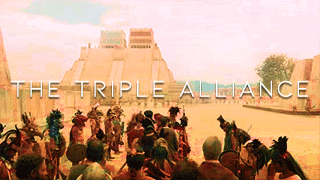
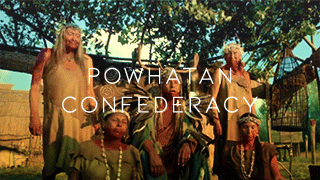
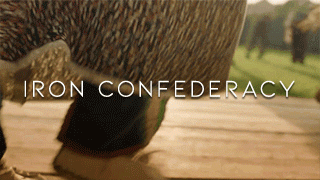
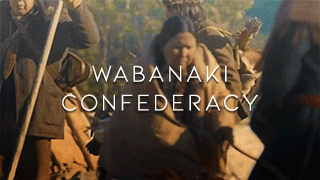
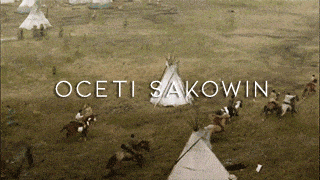
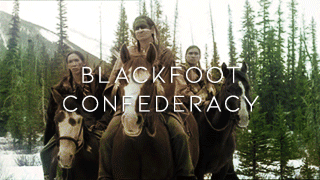
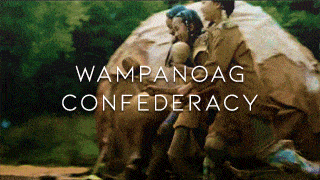
Native American Confederacies:
Haudenosaunee: Also known as the Iroquois Confederacy or the Six Nations, consist of the Mohawk, Onondaga, Oneida, Cayuga, Seneca, and later, Tuscarora. They were formed prior to European contact, and their form of government started by the Great Law of Peace was used as a Model for that of the United States Constitution. Oral tradition suggests the confederacy was formed before an eclipse circa the early 12th century.
The Triple Alliance: Later known as the Aztec Empire, was formed in 1428 under the leader Itzcoatl, wherein the Mexica formed a three-way alliance with the Texcocans and the Tacubans to defeat their most powerful rivals for influence of the region. They later became a dominant force ruling over multiple tribes and political factions until the invasion by the Spanish.
Powhatan Confederacy: Created in the late 16th century, was founded by Paramount Chief Wahunsenacah (Father of Matoaka, also known as Pocahontas), affiliating some 30 tribes in Virginia, creating the Powhatan Confederacy. Each tribe was led by a weroance that paid tribute to the Paramount Chief and allied together politically, economically, and militarily. Affiliated tribes included the Pamunkey, Patawomeck, Quiyoughcohannock, Chesapeake, Appomattock, Kiskiak, Mattaponi, Rappahannock, Werowocomoco, and more.
Iron Confederacy: political and military alliance of individual tribes against common enemies, membership included the Cree, Stoney, Metis, Saulteaux, and Nakota. It is unknown when it was first founded, but it existed at the arrival of settlers during the early 17th century and likely was created earlier.
Wabanaki Confederacy: Made up of the Mi’kmaq, Maliseet, Passamaquoddy, Penobscot, and Western Abenaki, this alliance was formed due to the common enemy of the English colonizers, whom they would go to war with in the First Abenaki war, which was then ended with the Treaty of Casco. They incorporated political elements from neighboring confederacies, such as the use of wampum for treaties, and they have their own symbol for the alliance.
Oceti Sakowin: known as the Seven Council Fires, (Titunwan, Yankton, Yanktonai, Mdewakanton, Wahpeton, Wahpekute, & Sisseton) is and was an alliance of Peoples divided into 3 ethnic groups, the Lakota, the Eastern & Western Dakota. Around 1300 AD, after years of moving from their ancestral lands of the central Mississippi Valley region, they adopted the characteristics of a northern tribal society and became known as the Seven Council Fires. Their battles against colonizers are some of the most well known, such as the Battle of Little Big Horn.
Blackfoot Confederacy: Is made up of 4 Nations with the same language. The Nations have their own governments, but banded together in political, spiritual, and social alliance. The affiliated tribes are the Siksika, Kainai, Peigan, and Pikani, and later, Tsuu T’ina was added to the confederacy. Their territory stretched from along the North Saskatchewan River in Canada to the Yellowstone River in Montana, and within the Rocky Mountains. They were known as a formidable alliance, often going to war with the Iron Confederacy.
Wampanoag Confederacy: Once a loose Confederation in the early 17th century, now one consisting of 10 tribes, are and were an alliance of multiple Peoples in Southern Massachussetts and Rhode Island, including the Chappaquiddick, Nantucket, Mashpee, Patuxet, Assawompsett Nemasket, Pocasset, Pokanoket, Nauset, Herring Pond, and Aquinnah. Being located on the Eastern coast of the United States, they were some of the first to meet colonists in the United States, and suffered casualities of illness, and resisted Colonization such as with King Phillip’s war.
#historyedit#native american history month#native american history#ndn#indigenous history#blackfoot#wampanoag#oceti sakowin#iron confederacy#powhatan#triple alliance#wabanaki#haudenosaunee#iroquois#justin's edits
1K notes
·
View notes
Text
Abawashded/hello my name is destry, I am Nakota sioux from treaty six territory in so called alberta Canada.
I am 21 years old, I’m two spirit/trans and I struggle with chronic illnesses, am disabled and am currently in between places for housing.
I currently can’t work a proper job in order to support myself because of my health so I could use some help financially.
It is Columbus Day so consider donating to me or any other indigenous folks you see today.
Here is my PayPal:
2K notes
·
View notes
Photo

Horse Nation, Linda Haukaas, 2010, Brooklyn Museum: Arts of the Americas
This complimentary pair of drawings depicts horses galloping across the background-facing opposite directions on each drawing, with four women with their backs to the viewer watching the horses. Each woman wears elaborate regalia and carries fans and pouches, the type of decorations used to decorate and honor horses. The details on each of their clothing depict warriors and horses in battle .To paraphrase the artist: The purpose of the drawings, "Horse Nation," is to honor 'tasunka wakan,' the horse, for its importance for the Lakota, Nakota and Dakota Oyate, the People. The horse allowed them to increase their mobility for travel and hunting, expand their territory, advance their 'akicita' (warrior societies that protect them), improve their economy, relieve their burdens and,as Linda indicates "most importantly gave women someone else to love." Linda Haukaas recreates 19th century style ledger art within a modern context with themes that particularly highlight women's roles in Plains society and with ceremonial and daily scenes that resonate today. She researches Museum collections and her own history to authenticate the historical references. Since in the past such representative drawings would have been done solely by the male artist she has broken new boundaries as a female ledger artist. © Linda Haukaas
Size: each sheet: 11 1/2 x 17 5/8 in. (29.2 x 44.7 cm)
Medium: Colored pencil and ink on late 1916 ledger paper
https://www.brooklynmuseum.org/opencollection/objects/197428
42 notes
·
View notes
Text

STAR ELDERS MESSAGE ~ IMPORTANT~
From CHIEF ARVOL LOOKING HORSE
19th Keeper of the Sacred Bundle
Received 1.17.2018
I, Chief Arvol Looking Horse, of the Lakota, Dakota, and Nakota Nations, ask you to understand an Indigenous perspective on what has happened in America, what we call “Turtle Island.” My words seek to unite the global community through a message from our sacred ceremonies to unite spiritually, each in our ways of beliefs in the Creator. We have been warned from ancient prophecies of these times we live in today, but have also been given a vital message about a solution to turn these terrible times. To understand the depth of this message, you must recognize the importance of Sacred Sites and realize the interconnectedness of what is happening today, in the reflection of the continued massacres that are occurring on other lands and our own Americas. I have been learning about these important issues since the age of 12 when I received the Sacred White Buffalo Calf Pipe Bundle and its teachings. Our people have strived to protect Sacred Sites from the beginning of time. These places have been violated for centuries and have brought us to the predicament that we are in at the global level.
Look around you.
Our Mother Earth is very ill from these violations, and we are on the brink of destroying the possibility of a healthy and nurturing survival for generations to come, our children’s children. Our ancestors have been trying to protect our Sacred Site called the Sacred Black Hills of South Dakota, “Heart of Everything That Is,” from continued violations. Our ancestors never saw a satellite view of this site, but now that those pictures are available, we see that it is in the shape of a heart and, when fast-forwarded, it looks like a heart pumping. The Diné have been protecting Big Mountain, calling it the liver of the earth, and we are suffering and going to suffer more from the extraction of the coal there and the poisoning processes used in doing so. The Aborigines have warned of the contaminating effects of global warming on the Coral Reefs, which they see as Mother Earth’s blood purifier. The indigenous people of the rainforest say that the rainforests are the lungs of the planet and need protection. The Gwich’in Nation in Alaska has had to face oil drilling in the Arctic National Wildlife Refuge coastal plain, also known to the Gwich’in as “Where life begins.” The coastal plain is the birthplace of many life forms of the animal nations. The death of these animal nations will destroy indigenous nations in this territory. As these destructive developments continue all over the world, we will witness much more extinct animal, plant, and human nations, because of humankind’s misuse of power and their lack of understanding of the “balance of life.” The Indigenous people warn that these negative developments will cause havoc globally. There are many, many more original teachings and knowledge about Mother Earth’s Sacred Sites, her chakras, and connections to our spirit that will surely affect our future generations. There needs to be a fast move toward other forms of energy that are safe for all Nations upon Mother Earth. We need to understand the types of minds that are continuing to destroy the spirit of our whole global community. Unless we do this, the powers of destruction will overwhelm us. Our Ancestors foretold that water would someday be for sale. This Prophecy was hard to believe! The water was plentiful, pure, full of energy, nutrition, and spirit. Today we have to buy clean water, and even then the nutritional minerals have been taken out; it’s just clear liquid. Someday water will be like gold, too expensive to afford. Not everyone will have the right to drink safe water. We fail to appreciate and honor our Sacred Sites, ripping out the minerals and gifts that lay underneath them as if Mother Earth were simply a resource, instead of the source of life itself. Attacking nations and using more resources to carry out destruction in the name of peace is not the answer! We need to understand how all these decisions affect the global nation; we will not be immune to its repercussions. Allowing continual contamination of our food and land is affecting the way we think. A “disease of the mind” has set in world leaders and many members of our global community, with their belief that a solution of retaliation and destruction of peoples will bring peace. In our Prophecies it is told that we are now at the crossroads: Either unite spiritually as a global nation or faced with chaos, disasters, diseases, and tears from our relatives’ eyes. We are the only species that is destroying the source of life, meaning Mother Earth, in the name of power, mineral resources, and ownership of land. Using chemicals and methods of warfare that are doing irreversible damage, as Mother Earth is becoming tired and cannot sustain any more impacts of war. I ask you to join me in this endeavor. Our vision is for the peoples of all continents, regardless of their beliefs in the Creator, to come together as one at their Sacred Sites
6 notes
·
View notes
Photo

The Sioux or Oceti Sakowin (/suː/; Dakota: Očhéthi Šakówiŋ /otʃʰeːtʰi ʃakoːwĩ/) are groups of Native American tribes and First Nations peoples in North America. The term is an exonym created from a French transcription of the Anishinaabe term "Nadouessioux", and can refer to any ethnic group within the Great Sioux Nation or to any of the nation's many language dialects. The modern Sioux consist of two major divisions based on language divisions: the Dakota and Lakota.
Before the 17th century, the Santee Dakota (Isáŋyathi; "Knife" also known as the Eastern Dakota) lived around Lake Superior with territories in present-day northern Minnesota and Wisconsin. They gathered wild rice, hunted woodland animals and used canoes to fish. Wars with the Ojibwe throughout the 1700s pushed the Dakota into southern Minnesota, where the Western Dakota (Yankton, Yanktonai) and Teton (Lakota) were residing. In the 1800s, the Dakota signed treaties with the United States, ceding much of their land in Minnesota. Failure of the United States to make treaty payments on time, as well as low food supplies, led to the Dakota War of 1862, which resulted in the Dakota being exiled from Minnesota to numerous reservations in Nebraska, North and South Dakota and Canada. After 1870, the Dakota people began to return to Minnesota, creating the present-day reservations in the state.
The Yankton and Yanktonai Dakota (Iháŋktȟuŋwaŋ and Iháŋktȟuŋwaŋna; "Village-at-the-end" and "Little village-at-the-end"), collectively also referred to by the endonym Wičhíyena, resided in the Minnesota River area before ceding their land and moving to South Dakota in 1858. Despite ceding their lands, their treaty with the U.S. government allowed them to maintain their traditional role in the Očhéthi Šakówiŋ as the caretakers of the Pipestone Quarry, which is the cultural center of the Sioux people. They are considered to be the Western Dakota (also called middle Sioux), and have in the past been erroneously classified as Nakota. The actual Nakota are the Assiniboine and Stoney of Western Canada and Montana.
The Lakota, also called Teton (Thítȟuŋwaŋ; possibly "dwellers on the prairie"), are the westernmost Sioux, known for their hunting and warrior culture. With the arrival of the horse in the 1700s, the Lakota would become the most powerful tribe on the Plains by the 1850s. They fought the United States Army in the Sioux Wars including defeating the 7th Cavalry Regiment at the Battle of Little Big Horn. The armed conflicts with the U.S. ended with the Wounded Knee Massacre.
Pictured: Sitting Bull, a Hunkpapa Lakota chief and holy man, c. 1831 – 1890 December 15.
71 notes
·
View notes
Link

A camera trap photo of a swift fox emerging from its den.
Excerpt from this story from the Smithsonian National Zoo & Conservation Biology Institute:
Over the last year and a half, I have been working with the Fort Belknap Indian Reservation Fish and Wildlife department head Herold Main and office manager Cheryl Fetter to establish a swift fox (Vulpes velox) reintroduction project to the reservation and the region. The Fort Belknap community has led conservation initiatives in the region for years and is considered, for example, a beacon of success in the effort to help black-footed ferret populations recover. So, we are excited to work with the community on this reintroduction, as well as other contributors to the project, including Defenders of Wildlife, World Wildlife Fund, the Bureau of Indian Affairs, state and federal agencies from Montana, Wyoming, Kansas and Colorado, and other swift fox and reintroduction experts. Together, we form the team that will work to reintroduce swift foxes to Fort Belknap.
Fort Belknap Indian Reservation is located in the homeland of the A’aniiih and Nakota tribes. The Reservation was established by the U.S. government in 1888, and comprises 675,147 acres. This territory was historically shared by a host of native wildlife species, such as wolves and grizzly bears. Some animals, like pronghorn, mule deer, badgers, coyotes, red foxes and bobcats, still share this land today. However, by the late 1960s swift foxes had been wiped out from the region.
Swift foxes have since returned to parts of Montana but are currently split into two populations separated by a gap of about 200 miles. The northern population is found near the Canadian border and the southern population near the Wyoming border. The members of Fort Belknap Indian Community are interested in reintroducing swift foxes, both for their cultural significance and for the opportunity to reestablish a connection between these two populations.
3 notes
·
View notes
Link
We’re a group of young climate justice organizers writing from Jason Kenney’s Alberta. Alongside other terrifying promises like repealing overtime pay, outing gay kids in schools, cutting healthcare funding by 25%, and tying funding for Indigenous nations to their stance on energy projects, our newly elected premier has promised to spend $30 million of public funds to build a “war room” spreading propaganda about Alberta’s oil sands and the people fighting for a transition away from them. He’s also promised funds to spy on and litigate work like ours.
SO, we wish weren’t writing this, but we’re building our own war room and we’ll need your help. We’ll use the funds to grow our work having face-to-face conversations with other Albertans about the need for a just transition to 100% renewable energy, training other organizers, and staging creative direct actions for Indigenous rights and climate justice.
Kenney and his United Conservative Party have stoked hate by spreading a conspiracy theory that climate justice work like ours is funded by a shadowy network of competing foreign oil interests. But Indigenous-led efforts to stop oil sands expansion aren't working because we have a lot of money from rich people (though seeing as that’s how Mr. Kenney’s work is funded we can understand his confusion). They’re working because of regular people like us all across the world who are desperate for a future with a liveable climate, good work, and Indigenous rights. They’re working because we see OUR HOUSE IS ON FIRE and since the early 2000s our governments have responded to that fact with a plan to triple oil sands production instead of one to transition our energy system.
We have so much work ahead of us, and Kenney is going to make it as hard as he can. Help us fight back!
Our war room > Kenney’s war room
Jason Kenney’s war room will be $30 million dollars. We think we can build ours for a fiscally conservative $30 *hundred* dollars instead.
For $3,000 we’ll be able to hold trainings for a 100 young people, talk to 1000s of other Albertans by canvassing and holding town halls on how to build a Green New Deal here for this province, and work with the Beaver Hills Warriors to build an Indigenous food sovereignty movement, organize for Indigenous rights, and support their ongoing actions in this city.
For $10,000 we’ll be able to do reach twice as many people, restart our People on the Path land art project to do creative direct action against the Trans Mountain pipeline, support 1000s of Alberta based high-school climate strikers , and start a rapid-response fund to protect our allies and frontline communities as they come under attack from Jason Kenney’s politics of austerity and hate.
For $30,000 we’ll be able to do all of the above, reach thousands more people, and rent a physical ‘war room’ -- a climate justice action centre to share with a dozen allied community groups and multiply our efforts to fight Kenney’s agenda.
Whatever level we reach, it will make a big dent in this government’s plans to let fossil fuel corporations sous-vide the planet as fast as they can. We know that offering an alternative vision that meets the scale of the overlapping crisis of economic inequality, climate change, and white supremacy is the best way to fight the growing wave of far-right petro-nationalism Jason Kenney is stoking in our province. They may have the money, but we have the benefit of being on the right side of history.
Who are we?
Climate Justice Edmonton is a grassroots collective of climate organizers based in Amiskwaciwâskahikan (Edmonton) on traditional Cree, Blackfoot, Dene, Nakota Sioux, Saulteaux, and Métis Nation territory. We are educators, workers, students, parents, and community organizers. We’re fighting for a just transition to 100% renewable energy with strong communities, good work, and Indigenous rights. We work closely with the Beaver Hills Warriors, a collective of Indigenous youth here in Amiskwaciy.
Many of our members, partners, and families make their living from the oil sands, but we know that the cost to frontline communities, our environment, our economy , and our collective future is too great to continue. We can build a brighter future by transitioning to a new economy.
In the past year alone, we’ve knocked on thousands of doors to talk about just transition, held a round dance blocking traffic in downtown Edmonton in solidarity with Wet’suwet’en, disrupted Morneau’s TransMountain purchase announcement in Calgary, held a sit-in in Minister of Natural Resources Amarjeet Sohi’s office, held rallies in solidarity with Beaver Lake Cree First Nation’s land rights trial, and helped grow an AB-based student climate strike movement. We’re about to launch a campaign calling for a Green New Deal for Alberta. Join us!
Want to help without donating? Follow us on Facebook, Instagram, and Twitter
Donate here!
235 notes
·
View notes
Link
Sky Hold Me Tight is the scuzzy and fuzzy debut release from Five Day Morning.
I wish to acknowledge that the land on which this EP was made is in Treaty 6 territory, a traditional meeting ground and home for many Indigenous Peoples, including Cree, Saulteaux, Niisitapi (Blackfoot), Métis, and Nakota Sioux.
I would also like to acknowledge that these songs were influenced by innovations in music that would not have been possible without the contributions of Black musicians. I recognize that as a white musician, I have a responsibility to hold myself accountable to educating myself and supporting Black contributions in music that have been erased and undermined by colonization and systemic racism.
1 note
·
View note
Text
Overview and History
The people of the Great Sioux Nation - also called the Seven Council Fires- are divided into three groups by linguistic barriers. These three groups consist of the Lakota, the Dakota, and the Nakota- also known as the Yankton-Yanktonai or Western Dakota. These linguistic divisions developed due to the wide range of territory inhabited by the collective Sioux people and from these divisions the Seven Council Fires are formed.The surviving dialects today are Dakota and Lakota. The Sioux do not have a common form of government but were instead united by pan-tribal mechanisms Since the ratification of the Indian Reorganization Act two thirds of the total Native American population lives on Reservation. Some Sioux Reservations can be found in Nebraska, Montana, North Dakota, and Minnesota, however, the highest population of Lakota, Nakota, and Dakota people is in South Dakota with a total of nine reservations.
The Sioux lived spread out among the Great Plains region in large bands of extended families. Once a year at the Sundance ceremony the Seven Council Fires converged. Vows were taken, goods were traded, and general celebrations took place to celebrate the midsummer season. In 1803 things started to change, The Louisiana Purchase had been made but the United States government did not have the “right of possession of the land”. In a surprising turn of events the Supreme Court validated the Native American’s ownership of the land by declaring that the government needed to sign individual treaties with each tribe/nation to purchase their land from them in return for “white settlement”. This was because the government in a rare moment of leniency acknowledged that the Native Americans had the “first law of the land”.
The Supreme Court’s ruling did not stop the violations that followed however, the government encouraged white hunters and settlers in the area to mercilessly hunt the surrounding buffalo population, which was a great source of meat and fur for the Sioux. The Treaty of 1868 declared that the Sioux would be moved onto newly established reservations, and if they complied, would be protected by the US constitution. In exchange for their land the Sioux received protection of their hunting rights, healthcare, education, and housing. After hundreds of years the Sioux were required to relocate to 11 reservations that make up what’s left of the Great Sioux Nation today.
Sources
Dunstan, Adam. 2019. Module 11.3:Great Sioux Nation, Pine Ridge, and Poverty. Online Course. University of North Texas
Akta Lakota Museum & Cultural Center. “The ‘Sioux’ Name and Dialects.” Sioux Origins - Akta Lakota Museum & Cultural Center. Accessed June 25, 2019. http://aktalakota.stjo.org/site/PageServer?pagename=alm_culture_origins.
Akta Lakota Museum & Cultural Center. “Understanding the Great Sioux Nation.” Understanding the Great Sioux Nation - Akta Lakota Museum & Cultural Center. Accessed June 25, 2019. http://aktalakota.stjo.org/site/News2?page=newsArticle&id=9017.
1 note
·
View note
Photo










$624,900
4 bedrooms
Saskatoon, SK
Cree, Saulteaux, Dene, Dakota, Lakota, Nakota, and Métis territory
#house for sale#whole house#househunting canada#clawfoot tub#4 bedrooms#urban#backyard#cree territory#saulteaux territory#dene territory#lakota territory#nakota territory#metis territory#saskatoon real estate
19 notes
·
View notes
Text
B Adair aspires to be the mentor he never had as a child in Hadisty, Alberta.
Due to a dearth of queer education and visibility, he had to learn about his transgender identity on his own while battling despair and suicidal thoughts throughout his life.
He claims that transitioning saved his life. “Once I felt at ease with my own identity and began studying everything I could, I wanted to share what I had learned.”
Adair, 36, now works as a diversity and inclusion consultant, receiving emails, Facebook messages, and phone calls from parents who want to better understand their children from all across the province.
“Being a mentor for others has been incredible,” Adair says, adding that the children he encounters via his job inspire him.
Mentorship and representation are extremely important for LGBTQ2 kids. Given queer and trans youth's greater rates of despair, suicide, and drug misuse, as well as specific everyday obstacles, activists believe having a role model may mean the difference between life and death.
Older generations have paved the path for younger LGBTQ2 individuals navigating the world, whether via campaigning for more queer-inclusive education or building safe places for themselves.
Debbie Owusu-Akyeeah credits her "coming in" experience to her connections with other LGBT Black women. Her friend's mother used to take her to Toronto's Dyke March as a child, which allowed her to "see (herself) in the future."
“Seeing Black lesbians from Jamaica or Latinx feminists... it opened a door for me,” Owusu-Akyeeah adds.
She stresses inclusion while working with queer and trans kids as the executive director of the Canadian Centre for Gender and Sexual Diversity, especially because LGBT settings are frequently quite white, she adds.
“It's critical to understand that Black, Indigenous, and people of colour are managing racism, colonialism, and homophobia and transphobia on top of homophobia and transphobia,” she adds.
She hopes to fill in the educational gaps she missed in school for future generations through her work.
According to a recent KLB study, LGBTQ2 adolescents have faced greater rates of depression during the COVID-19 epidemic, and some have had to disguise their sexual or gender identity among unsupportive family members.
Seth Compton, a transgender man from North Bay, Ont., saw the need to develop a safe environment for LGBTQ2 children for these reasons, as well as the need for more assistance in rural communities.
He pushed to keep OUTLoud North Bay, a peer support and mentorship place, open to help the 100 youngsters who had signed up.
“I believe a lot of the kids enjoy the fact that I have lived experience,” says Compton, who adds that children come to him to discuss gender identity, gender-affirming surgery, and mental health.
One of the youngsters recently contacted him at 2 a.m., saying he was thinking of killing himself. Compton sat up at the foot of his bed, telling him that he was not alone and that life was worth living.
“I’m thankful he called me at 2 a.m. because he’s still here,” Compton says.
He goes on to say that many of the youngsters come in nervous, and seeing them grow and gain confidence in their own identities brings him to tears.
He admits, "I weep a lot." Two of his children frequently enter the area as allies, having learnt from their parents and now being able to pass on what they have learned to other youngsters.
Beyond grassroots groups, Shakir Rahim, a board member of the AIDS Committee of Toronto and an Enchante Network mentor, believes that being able to take up space as a South Asian queer male is crucial so that people can see themselves represented in board governance.
“When mentoring the gay community, my race is a major component of what I believe I bring to the table,” he adds. “Being able to model that and demonstrate that you can be a member of a board of directors... is really important to me.”
He goes on to say that coloured people are frequently underrepresented in these places. “Representation is essential not only because it instills trust in these organizations,” Rahim adds. “However, it is equally critical to guarantee that various ethnic viewpoints are heard.”
It's just as important to take up space online through representation and advocacy. Kairyn Potts, a member of the Native Youth Advisory Council in Ontario and a Two-Spirit Nakota Sioux from Treaty 6 territory, uses his TikTok platform to educate people.
Through makeup, dress, humour, and drag, among other things, he can teach others about his culture and identity through the films he uploads.
Despite the fact that social media is not always a secure environment for racialized and LGBTQ2 groups, Potts claims to try his best to erase nasty comments and make his platform as safe as possible.
Growing up, Potts had a gay mentor who was both his boxing instructor and a family friend. Potts adds, "I credit him with a lot of my self-confidence and things I learnt about my identity and self-worth. He's still a part of my life.”
0 notes
Text
“We Are The Land, And The Land Is Us”
In Dian Million’s analysis of racial ecologies, “We Are The Land, And The Land Is Us,” Million describes a standoff between the US government, backed by powerful oil companies, and protesters from local Native American tribes, including, the Lakota, the Dakota, and the Nakota, which took place on sacred Native American lands, which were soon to be the home of the new Dakota Access Pipeline. Central to this story brought up by Million, and to similar stories like it, is a question of neocolonialism: What is neocolonialism, and how is the construction of the Dakota Access Pipeline after a lengthy and hard-fought battle with Native American protesters an example of the concept of neocolonialism at work in the world today? The installation of the pipeline into sacred Native American lands is definitively an example of neocolonialism as it continues to exist today, but it is first important to note what neocolonialism actually means.
As one could imagine, neocolonialism is at its most basic, a “new” form of colonialism in which disproportionate power is held by the colonizing group over those being colonized. How neocolonialism differs from traditional colonialism is that neocolonialism exerts its power through hegemonic means such as through political or economic means, rather than through the traditional colonial exertion of power by practices of colonial violence, and warfare used to extend territory and to suppress and oppress the native peoples or other colonized populations living in the area prior to colonization.
As neocolonialism is the use if hegemonic controls, such as political or financial control or control through fear, rather than through explicit use of force, to influence groups that have historically been colonized and subsequently oppressed, it is easy to imagine the destruction of Native American lands for the construction of an oil pipeline to be a representative example of neocolonial practices at work in the world today. Through use of coercive power and political policies such as eminent domain, the US government was successfully able to deny the Lakota and other Native American peoples control over their own land, with all of its historical and cultural significance, instead using the land to promote the welfare of the colonizers, the white Americans who benefit from easier access to oil, without any benefit to the oppressed Native American groups who inhabited the colonized lands. This was an act of neocolonialism in that in provided benefits for colonizers while creating a great loss for the colonized, who Million describes as seeing the installation of the pipeline as, “an act of rape, a violence that ignored Standing Rock’s long-embodied sovereignty in that Lakota place.”
Through political control over the Lakota lands through use of eminent domain, the government was able to rape the land for what it considered to be the “greater good,” as well as by coercive control through fear as Million notes the militarization of the police forces to combat or suppress protesting from the Native American peoples. Through this use of hegemonic control without direct use of violence, the US government is engaging in practices of neocolonialism by effectively continuing to colonize and exert power over those who have already been colonized, whether the oppressors and colonizers are new to the lands being colonized, or if they have historically displayed control over the area through colonization by force.
0 notes